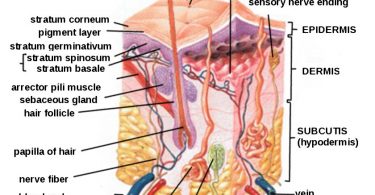Carbs are not evil! You just need to know how to make better carb choices. Many carbohydrate-dense fat-free foods are considered healthy because they are fat-free. However, we now know that eating mostly carbohydrates foods are...
You’re So Vain; But Ketones Trigger An Anti-Aging Brain
Defy Aging: Strenuous Exercise and Go Keto!
 Diet and exercise are tools used to achieve a physical or weight goal in order to improve appearance. You might say some people diet and exercise in vain.
Diet and exercise are tools used to achieve a physical or weight goal in order to improve appearance. You might say some people diet and exercise in vain.
Yet new research supports a deeper more important biochemical connection between a ketogenic diet and exercise that goes beyond the vanity of physical appearance and protects against an aging brain. Ketone bodies, also known as β-hydroxybutyrate, are simply defined as by-products of burning fat for energy.
Dr. Moses Chao, a professor of cell biology, physiology and neuroscience at New York University School of Medicine and his colleagues published their study on mice and how “strenuous exercise seems to beneficially change how certain genes work inside the brain," as a result of its ability to produce ketone bodies".
Source: https://elifesciences.org/content/5/e15092
Strenuous Exercise and Ketones Reduce Diseases of Aging
It seems as though exercise “triggers” the production of a protein involved in nerve cell growth and it also helps to improve memory. This protein is called “brain-derived neurotrophic factor”, or BDNF.
A low level of BDNF is linked to diseases of aging such as depression, dementia and Alzheimer’s disease. The more BDNF, the lower the neuro-degenerative mental health risk.
Chao says, “increased BDNF levels are associated with lower rates of dementia and that studies have shown that BDNF levels in the brains of people with Alzheimer’s or Huntington’s disease are, on average, half that of people without either brain-damaging disease.” What the scientists found was that mice who strenuously exercised for one month had higher BDNF levels when compared to those that didn’t exercise at all.
Ketones were found to be the underlying reason for higher BDNF levels. So a ketogenic diet that produces ketones may help improve memory and lower mental/neurological health risks.
Ketones Lower Age Accelerating Enzymes
Experiments also showed that exercise inhibits an enzyme, histone deacetylase or HDACs. HDACs work to lower BDNF and influence the genetic expression of mental health conditions that occur as we age. Currently mood stabilizing and seizure preventive pharmaceutical drugs are used to lower HDACs in order to help treat these diseases. So, the ketones that were produced helped lower an enzyme that works to accelerate the aging process.
Naturally Elevate Ketones
How can you increase BDNF and keep HDACs at bay without taking prescription drugs? There are two ways to naturally elevate ketone bodies, diet and exercise:
- Eat a ketogenic diet. When you eat more protein and fat while keeping carbohydrates to less than 50 grams a day (based on your personal goals with calorie consumption being equal or less than your body needs) with a primary focus on consuming fat and protein from real food like meat, chicken, eggs, fish, oils, olives, coconut, avocado, butter and 2-3 cups of green leafy veggies. KetoDietApp is an example of one online resource tool that can be used to help target your calorie needs and guide your nutritional choices.
- Burn more ketone bodies by being active. Once glycogen stores are depleted more fat is used to provide calories for energy; It takes 20-30 minutes of moderately intense exercise to start burning more fat. If you are following a ketogenic diet, ketones continue to be burned and ketone levels rise immediately.
Your vanity may help maintain your quality of life. Go keto because a ketogenic diet and moderate to high intensive activity can act as powerful tools in the genetic response to aging, mental/neurological health and as substitutes for more risky pharmaceutical drugs that work by blocking natural body processes.
Related Posts
7 Best Anti-Aging Secret
Find out which 7 best anti aging factors influence longevity. Only twenty to thirty percent of longevity relies on genetics. However, the Spanish National Cancer Research Center and the Kuakinni Medical Center in Honolulu have...
3 Ways Eating Fat Increases Longevity
Clear your mind of “fat-free”, “low-fat” eating and you will live a long healthy life. It is not easy to overcome the low-fat brainwashing we have endured over all these years but it is a necessity for optimal weight, wellness...
Dr. Oz’s “And My” Guide to Anti-Aging
Dr. Oz spent an entire show on aging, www.doctoroz.com/videos/decade-decade-guide-anti-aging. The show describes the aging process starting in your 30’s through your 50’s. His show was interesting.
Anti Aging Benefits of a Skin “Cocktail”
Your skin actually contains 3 different layers. The epidermis, dermis and subcutaneous (fat) layer. Each skin layer serves a different function.
3 Anti-Aging Nutrients Missing From Low Fat Foods
Eat real foods that contain fat because they contain nutrients that low or non-fat foods DO NOT have. Expanding your eating choices to include a variety of foods that contain all types of fat can reap many anti-aging benefits...
Is The Fountain of Youth Within Your Grasp?
If genetics is only partly responsible for the aging process, what then is the largest contributor ? Lifestyle. Yes in one simple word, lifestyle is the key to staying younger.
Hormonal Havoc Harnesses Metabolic Overdrive (Part1)
We all know that the fountain of youth does not exist but if you feel the need to turn back the hands of time consider balancing sex hormones. What are they and what are the symptoms you should be aware of?
Strong Bones: Moving Beyond Calcium and Vitamin D
By the time we hit our mid to late thirties we naturally start to lose bone mass and density. This is why broken and fractured bones become an issue as we get older. How should we keep bones healthy?
For All The Soda Drinkers (Part II)
You might find it interesting to understand how soda can affect you and why it is important to understand the foods and ingredients you put into your body. You miss the boat if you only pay attention to calories, fat or...
Sensational Sex for Your Health
Sex has health benefits for both men and women and the good news is that people are having sex through their '80's. What are the health benefits? Read more to find out!
Capturing the Fountain of Youth
The secrets of staying young and healthy will not come in a pill, a cream or a special diet. Most likely your genetic make-up will determine how you age. However, living a healthy lifestyle will stack the odds in your favor...
We All May Have The Potential to Capture The Fountain of Youth!
The Fountain of Youth is a legend claiming eternal youth for anyone who drinks its water. We all have the ability to capture The Fountain of Youth and here's how:
Insulin Lurks As An Underlying Cause to Many of Your Health...
The bottom line in many illnesses including aging is Insulin. Diabetes is known for its aging of the body's organs and links to many other health conditions. It is not rocket science, its simple. Stay healthy avoid many diseases...









